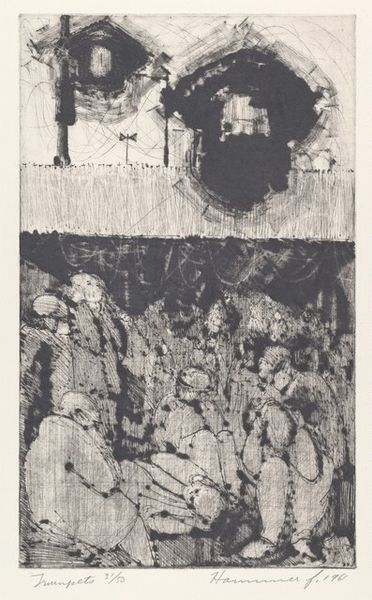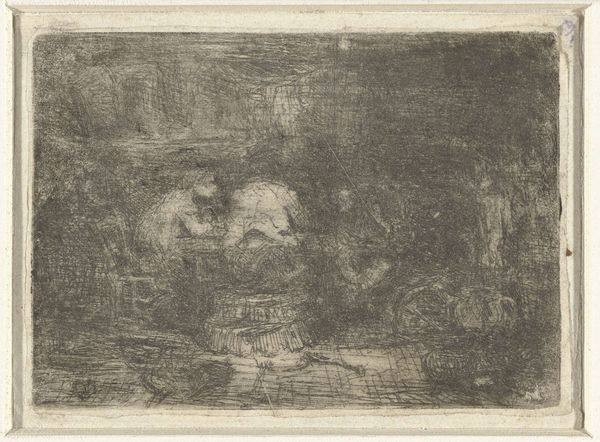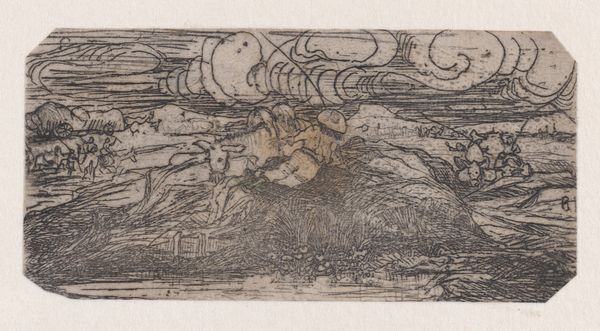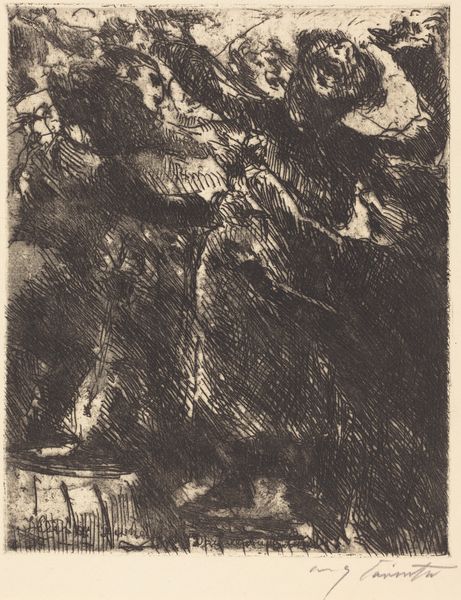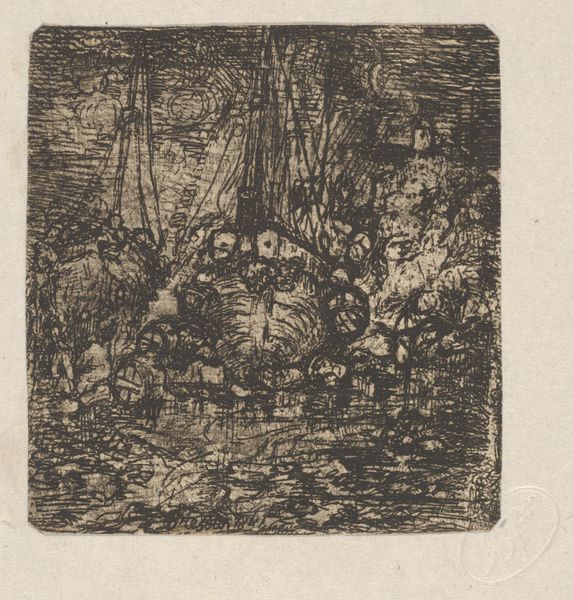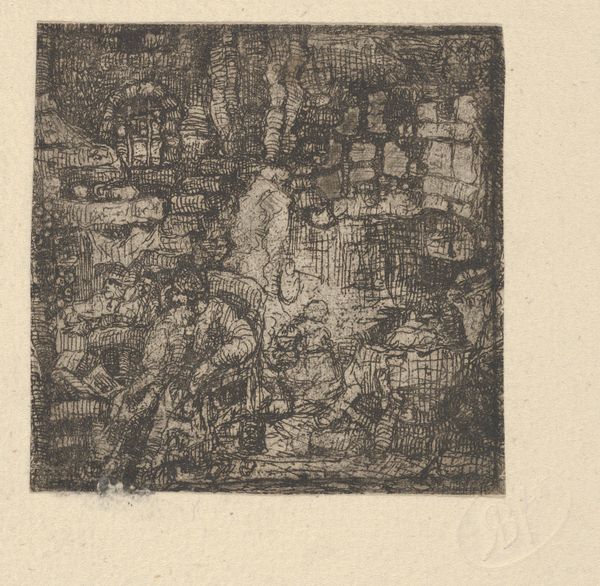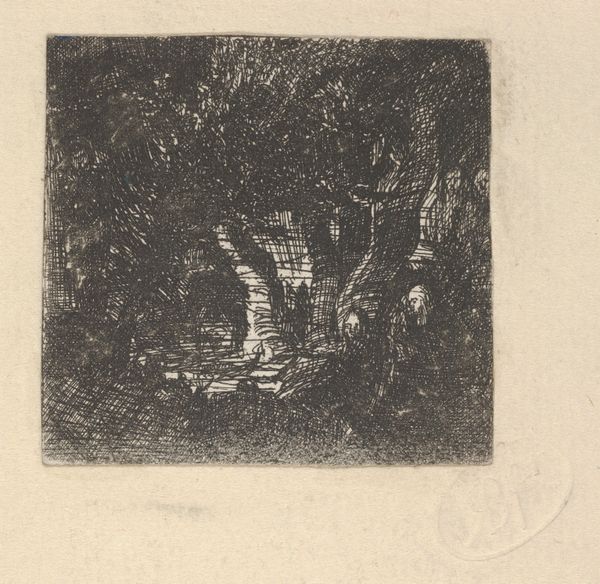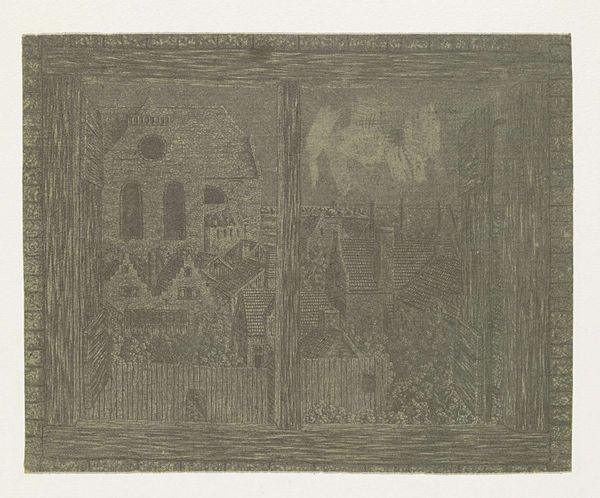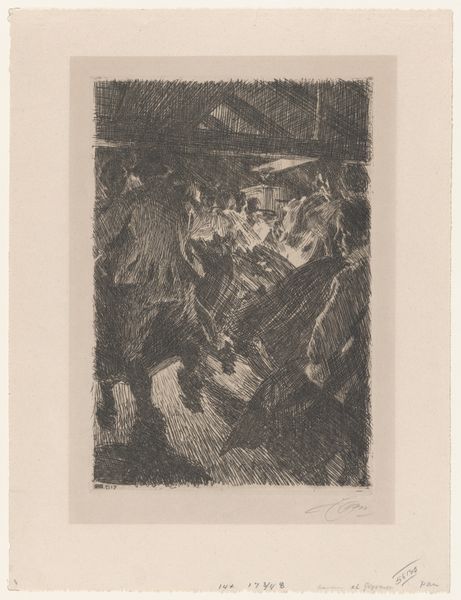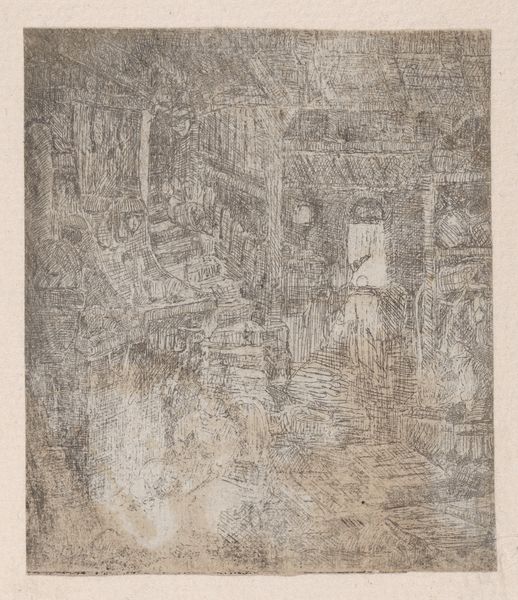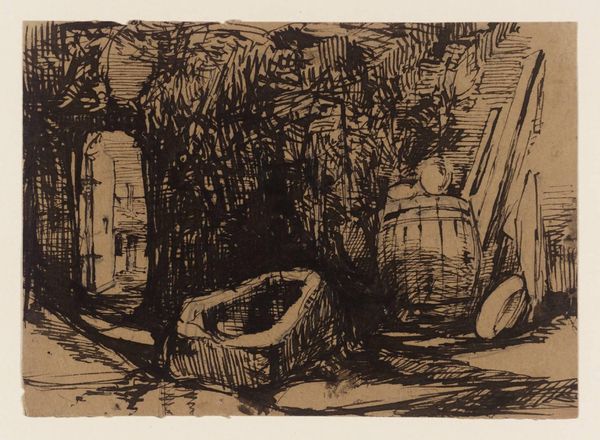
drawing, print, etching, intaglio
#
drawing
# print
#
etching
#
intaglio
#
genre-painting
#
realism
Dimensions: Mount: 9 3/4 × 13 3/4 in. (24.8 × 35 cm) Sheet: 2 5/8 × 4 in. (6.6 × 10.2 cm)
Copyright: Public Domain
Curator: This intaglio print, "Intérieur" or "Interior", was conceived by Rodolphe Bresdin between 1839 and 1885, and now resides at the Metropolitan Museum of Art. It depicts a scene from within a modestly appointed home. Editor: My first impression is the claustrophobia of it, that close-packed dark etching style. There’s almost a crushing weight implied by the ink density. Curator: Absolutely. Bresdin worked extensively with etching, pushing the medium’s capabilities through dense lines and a visible attention to the labor inherent in mark-making. Think about the hours of labor concentrated in the crosshatching itself! Editor: It feels less like observing domesticity and more like encountering a lived, labor-intensive reality. It brings forth issues around gendered division of labor too. I'm immediately drawn to consider the lives of those in modest homes. Curator: Bresdin's lifestyle mirrored his artwork. He often worked on commission, depicting genre scenes such as these which suggest a link between his precarious economic state and the themes he illustrated. What strikes you about their working? Editor: The limited means reflected here point towards a need for resourcefulness. In this dark intimate setting there is almost a commentary on the realities for ordinary people at the time. Bresdin's social commentary almost vibrates off the print. What processes are discernible within the physical crafting of it, would you say? Curator: Consider Bresdin’s economic conditions. These deeply bitten lines denote an artisan grappling with materials, where perhaps copper was hard won, etching grounds expensive and time very much equated monetary value. The dark effect overall might also suggest, simply, ink frugality. The visible marks denote effort and a degree of economic investment on Bresdin’s side to bring his observations on the social realities surrounding him to life. Editor: I agree with your analysis and that these constraints informed the work itself. And with that I hope we've offered an entryway to a conversation on “Interior.” Curator: Precisely! By thinking about its means of production, it amplifies the work and themes it subtly introduces, opening possibilities of discourse to better understand the narratives depicted.
Comments
No comments
Be the first to comment and join the conversation on the ultimate creative platform.
